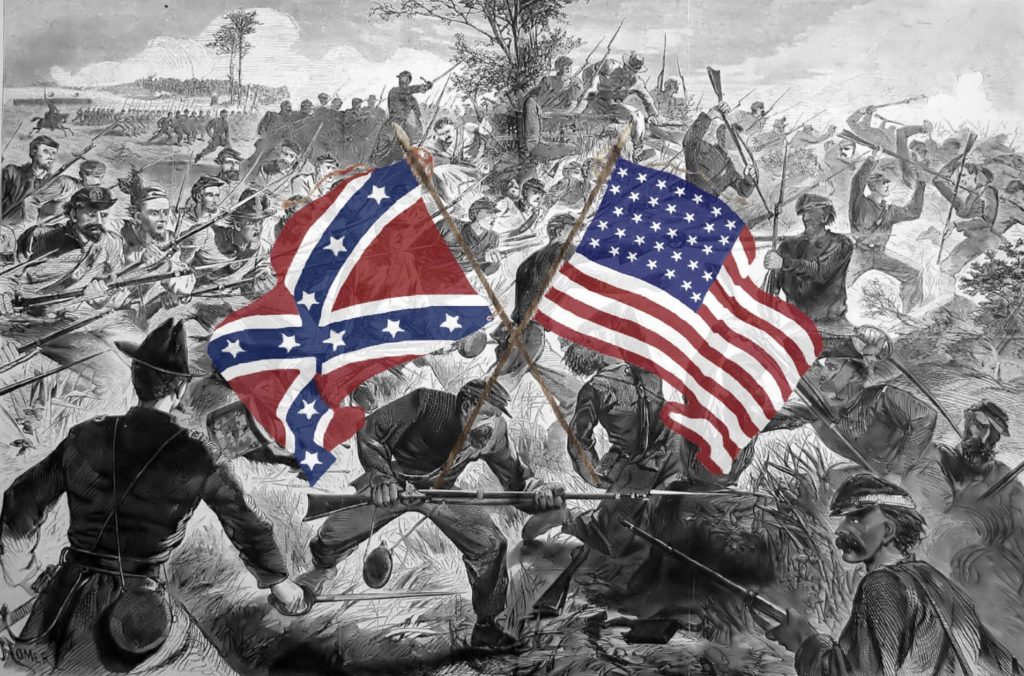Table of Contents
People, Battles, Speeches, and a Submarine
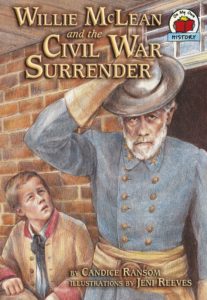 |
Candice F. Ransom’s Willie McLean and the Civil War Surrender (First Avenue Editions, 2004) is the story of Lee’s 1865 surrender to Grant in the McLean house in the little town of Appomattox Court House that finally ended the Civil War. The story features young Willie and Lula McLean; an afternote explains how Lula’s rag doll was taken by a Union officer and eventually, in the 1990s, donated to the Appomattox Court House National Historical Park. For beginning readers ages 6-8. |
| From the Appomattox Court House National Historical Park, Lula McLean’s Rag Doll is an online story, told in the voice of the doll, of Lee’s surrender to Grant in 1865. There’s also a photograph of the doll. | |
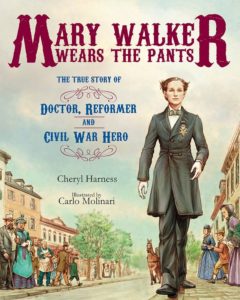 |
Cheryl Harness’s Mary Walker Wears the Pants (Albert Whitman & Company, 2013) is the story of the unconventional Mary Edwards Walker, suffragist, and one of the first woman doctors in the United States – who joined the Union Army as a doctor and became the only woman ever to win a Medal of Honor. (And she wore pants!) For ages 6-9. |
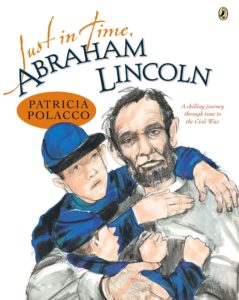 |
In Patricia Polacco’s Just in Time, Abraham Lincoln (Puffin, 2014), Michael and Derek walk through a door in a Civil War museum and end up back in 1862 just after the Battle of Antietam, where they meet Abraham Lincoln and bring him a hopeful message from the future. For ages 7-10. |
 |
By Kate Boehm Jerome, Civil War Sub: The Mystery of the Hunley (Penguin, 2002) tells the story of the Confederate submarine that completed one mission, then vanished, only to be recovered in 2000. For readers ages 7-9. |
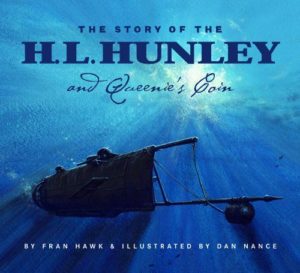 |
Fran Hawk’s The Story of the H.L. Hunley and Queenie’s Coin (Sleeping Bear Press, 2004) is the story of the remarkable Confederate submarine that became the first combat submarine to sink an enemy warship. It was recovered in 2000. For ages 7-11. |
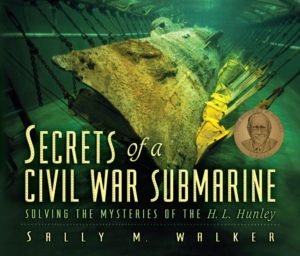 |
Sally Walker’s Secrets of a Civil War Submarine (Carolrhoda, 2005) is a fascinating and well-researched account of the design and building of the Civil War submarine, the Hunley, its one and only mission, and its recovery over 100 years later (with the bodies of the crew still on board). Illustrated with maps, drawings, and photos. For ages 12 and up. |
| Read more about it at The Hunley’s Daring Submarine Mission. | |
| The Friends of the Hunley website has a history of the submarine and information about its recovery. | |
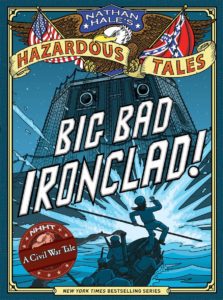 |
Big Bad Ironclad in Nathan Hale’s Hazardous Tales series (Amulet Books, 2012) is a graphic-novel account of the race between North and South to build the biggest and best ironclad ship. For ages 8-12. |
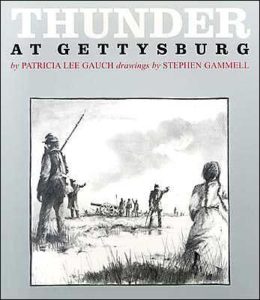 |
Patricia Gauch’s Thunder at Gettysburg (Calkins Creek, 2003) is the story of the battle through the eyes of 14-year-old Tillie, based on an actual autobiographical account. For ages 7-11. |
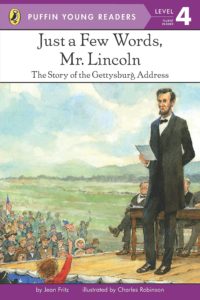 |
Jean Fritz’s Just a Few Words, Mr. Lincoln (Penguin, 1993) is a reader-friendly account of the Gettysburg Address for ages 7-9. |
| Gettysburg by the Numbers discusses what the weather was like during the days of the Battle of Gettysburg, how it affected the soldiers, and how weather impacts battles in general. | |
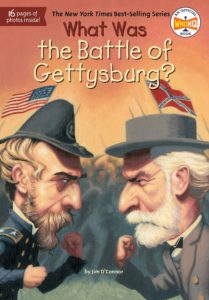 |
Jim O’Connor’s What Was the Battle of Gettysburg? (Grosset & Dunlap, 2013) has a brief overview of the Civil War and a detailed description of the Battle of Gettysburg and its importance. Illustrated with maps, drawings, and photographs. For ages 8-12. |
| For the complete list of the What Was? series books, see here. | |
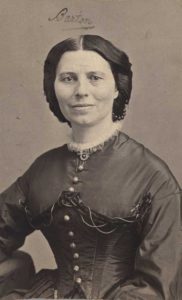 |
There are many biographies of Clara Barton, Civil War nurse and founder of the American Red Cross. For ages 4-8, see Patricia Polacco’s picture book Clara and Davie (Scholastic, 2014); for ages 6-10, the TIME for Kids series includes the 48-page Clara Barton: Angel of the Battlefield (HarperCollins, 2008), illustrated with period and modern photographs.
For teenagers and adults, see historian Stephen Oates’s comprehensive Woman of Valor: Clara Barton and the Civil War (Free Press, 1995). |
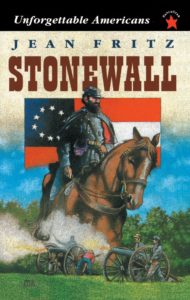 |
Jean Fritz’s Stonewall (Puffin, 1997) is a beautifully written 150-page biography of the Southern general who got his nickname from his stand at the Battle of Bull Run. It appears to be out of print – check your local library. Worth tracking down because Fritz is a superb historical writer. For ages 8-12. |
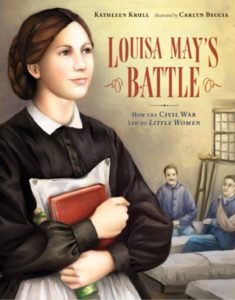 |
By Kathleeen Krull, Louisa May’s Battle (Walker Children’s Books, 2013) is the story of how Louisa May Alcott’s Civil War experiences – she worked as a nurse – led eventually to the publication of Little Women, one of the first novels to be set during the Civil War. For ages 8-12. |
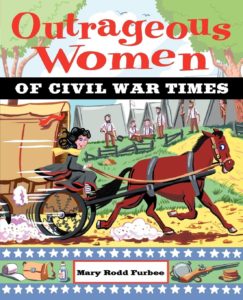 |
The featured women of Mary Rodd Furbee’s Outrageous Women of Civil War Times (Jossey-Bass, 2003) weren’t all what I’d call outrageous, but they were certainly prominent. The book is divided into four informational sections: Reformers and Writers, Saviors and Leaders, Soldiers and Spies, and First Ladies. Readers learn about Louisa May Alcott, Susan B. Anthony, Sojourner Truth, Clara Barton, Dorothea Dix, Belle Boyd, and more. For ages 9-12. |
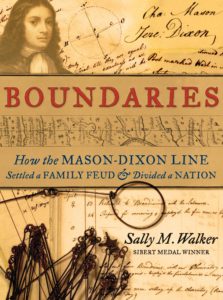 |
Sally Walker’s Boundaries: How the Mason-Dixon Line Settled a Family Feud and Divided a Nation (Candlewick, 2014) is a well-researched and wide-ranging account of the boundary that played such a prominent role in the antebellum slavery debate and the post-Civil-War cultural divide. But there’s a lot more to it than that. A thoroughly interesting read for ages 10 and up. |
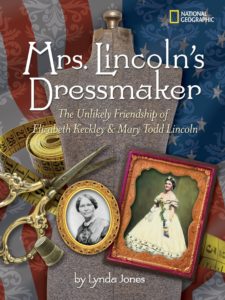 |
Lynda Jones’s Mrs. Lincoln’s Dressmaker (National Geographic Children’s Books, 2009) is the story of the “unlikely friendship” between Mary Todd Lincoln and Elizabeth Keckley, a former slave and the First Lady’s dressmaker. For ages 10-14. |
| From the Smithsonian magazine, see The Story of Elizabeth Keckley, Former-Slave-Turned-Mrs.-Lincoln’s-Dressmaker. | |
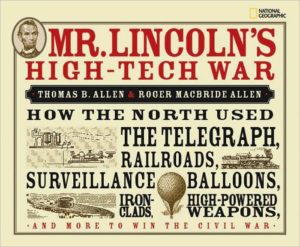 |
By Thomas B. Allen, Mr. Lincoln’s High-tech War (National Geographic Children’s Books, 2009) pairs an overview of the Civil War with an account of the technology that was used to win it, from the submarine and the ironclad warship to the telegraph, railroad, and repeating rifle. For ages 12 and up. |
